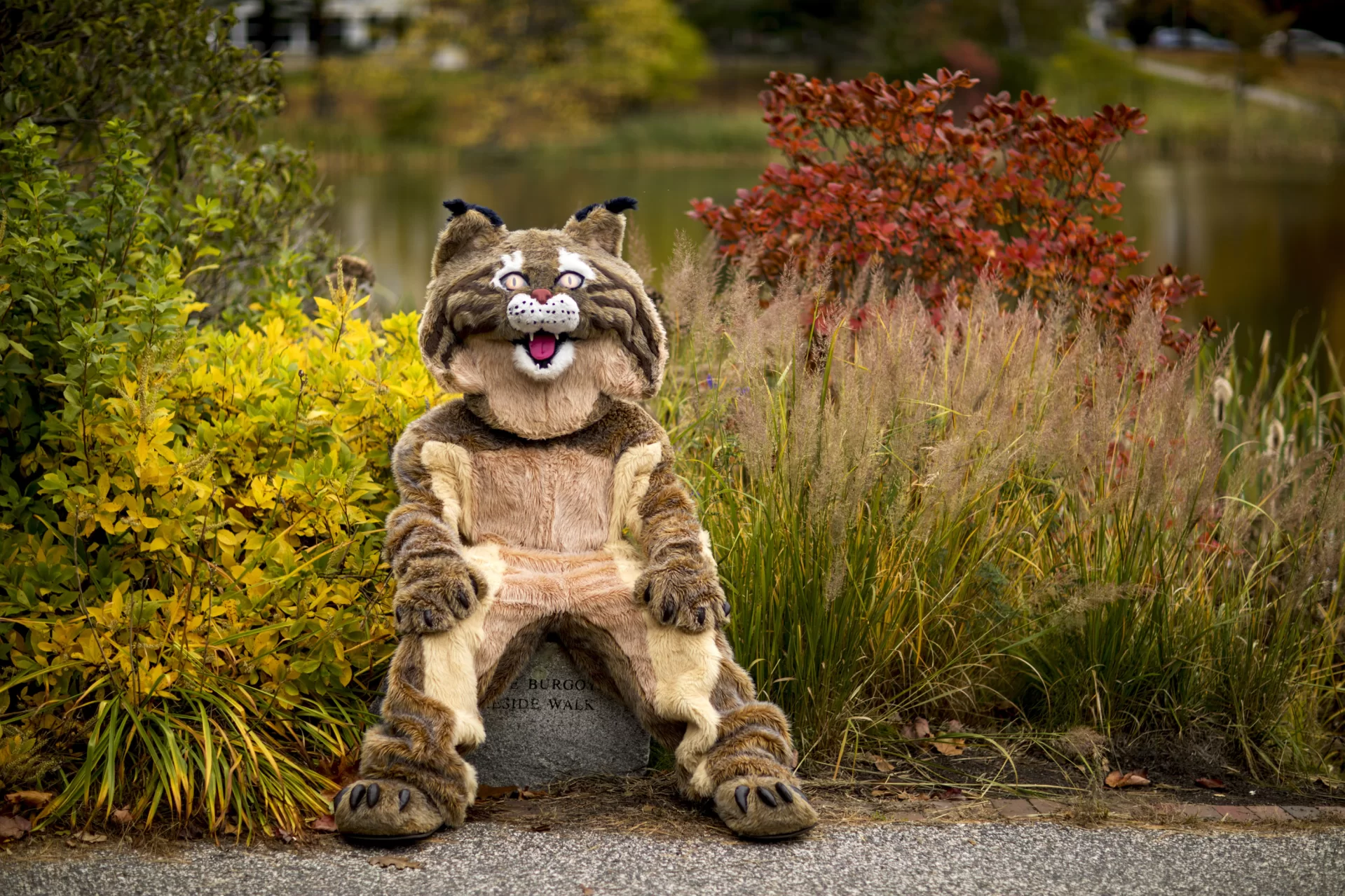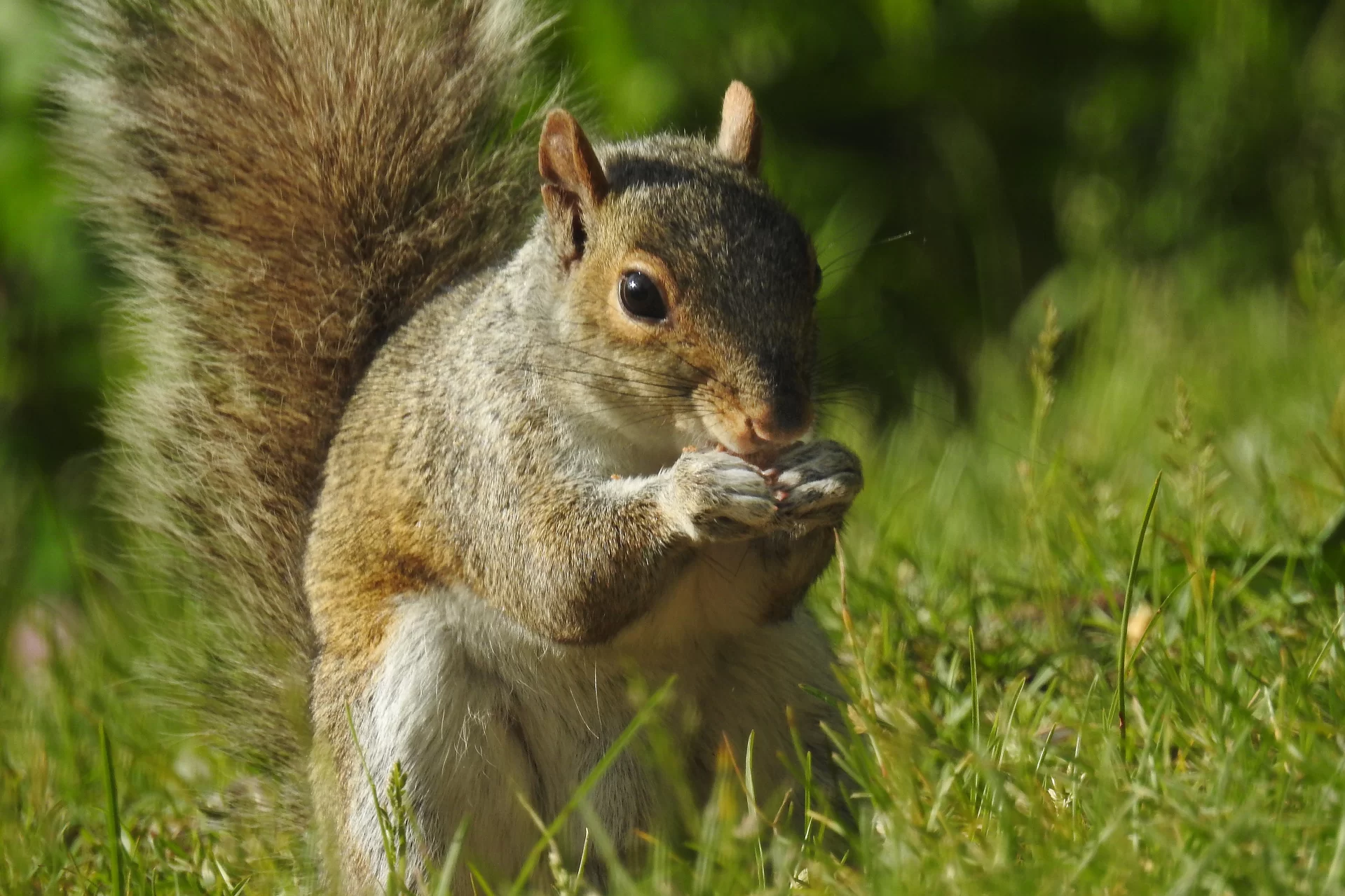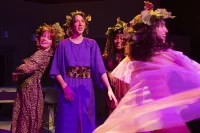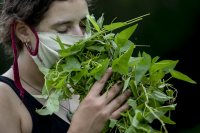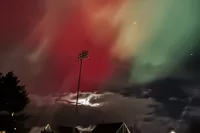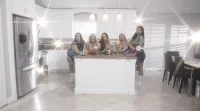
Lake Andrews and its environs are lush and teeming with life these spring days. So whether you’re an alum here for Reunion weekend or a daily Puddle walker, here are 16 animals we’ve seen both recently and over the years — and that you might see whenever you swing by the popular Bates pond.
With a perimeter of a third of a mile, Lake Andrews features about 3 acres of habitat. For the purpose of our accounting, we offer animals within the perimeter of the Burgoyne Lakeside Walkway, which is about a quarter of a mile.
Name: Painted turtle, Chrysemys picta
The following is a sequence of events that created a hay-bale haven for painted turtles at Lake Andrews this spring:
First, Facility Services placed bales of hay over storm drains around the pond to prevent ducklings from tumbling in (which they do, all the time). Then, students (we assume) tossed a few bales into the pond (just…because). The bales floated, and painted turtles discovered the little rafts, and turned them into sunning spots. This gathering was seen on May 20, 2024.
Name: Red-winged blackbird, Agelaius phoeniceus
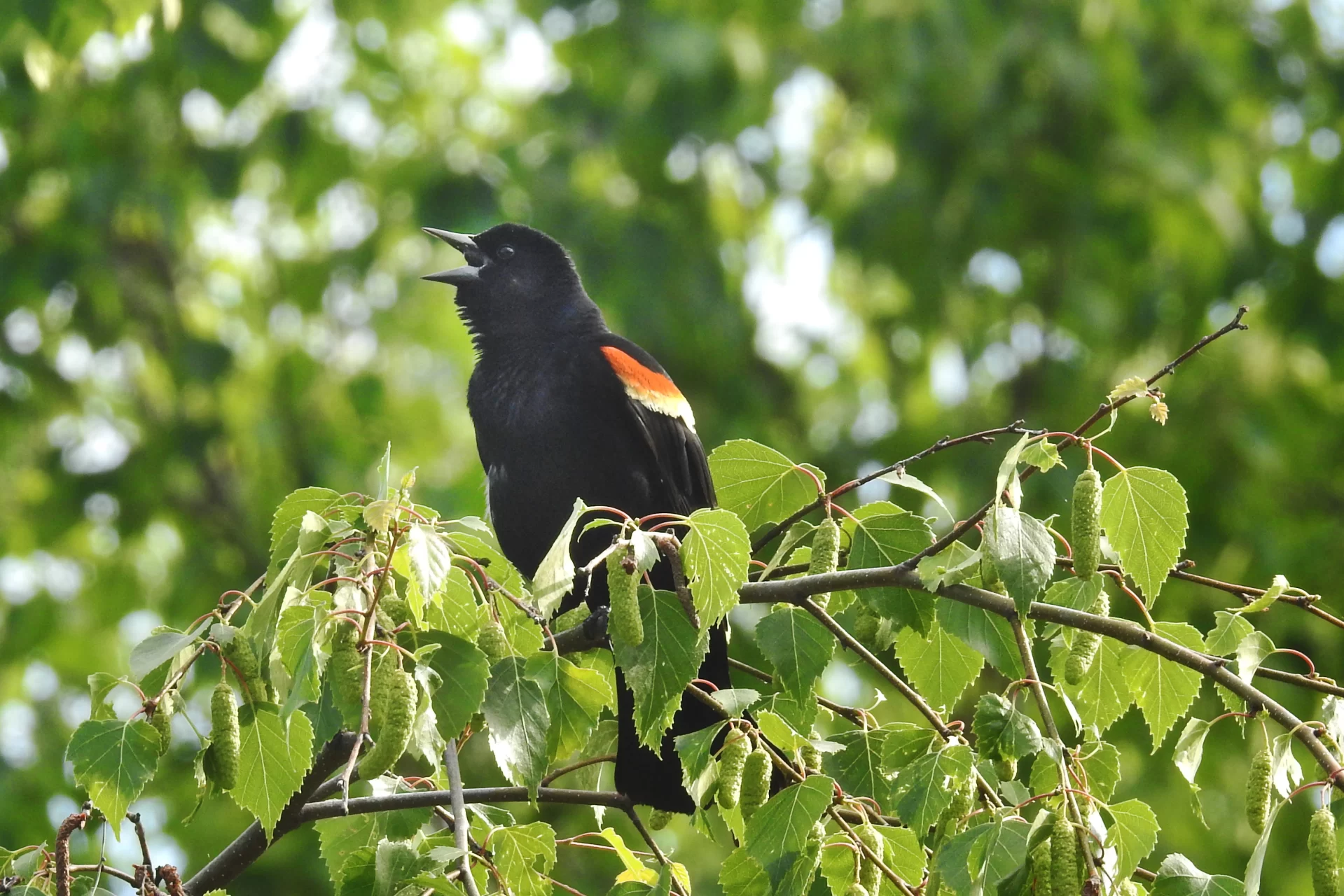
Puddle walkers are accustomed to being dive-bombed by noisy red-winged blackbirds that nest around the pond.
They’re very territorial, behaving like someone who moves into a college town and then gets really annoyed when students appear.
Name: Muskrat, Ondatra zibethicus
A semi-aquatic rodent, muskrats are good for the Puddle because their feeding habits prevent shoreline overgrowth. This guy was seen swimming (and ultimately diving) on April 11, 2024.
Name: Bald eagle, Haliaeetus leucocephalu
These two bald eagles were seen flying above Lake Andrews on Nov. 16, 2023. They’re also seen by Bates rowers on the Androscoggin River.
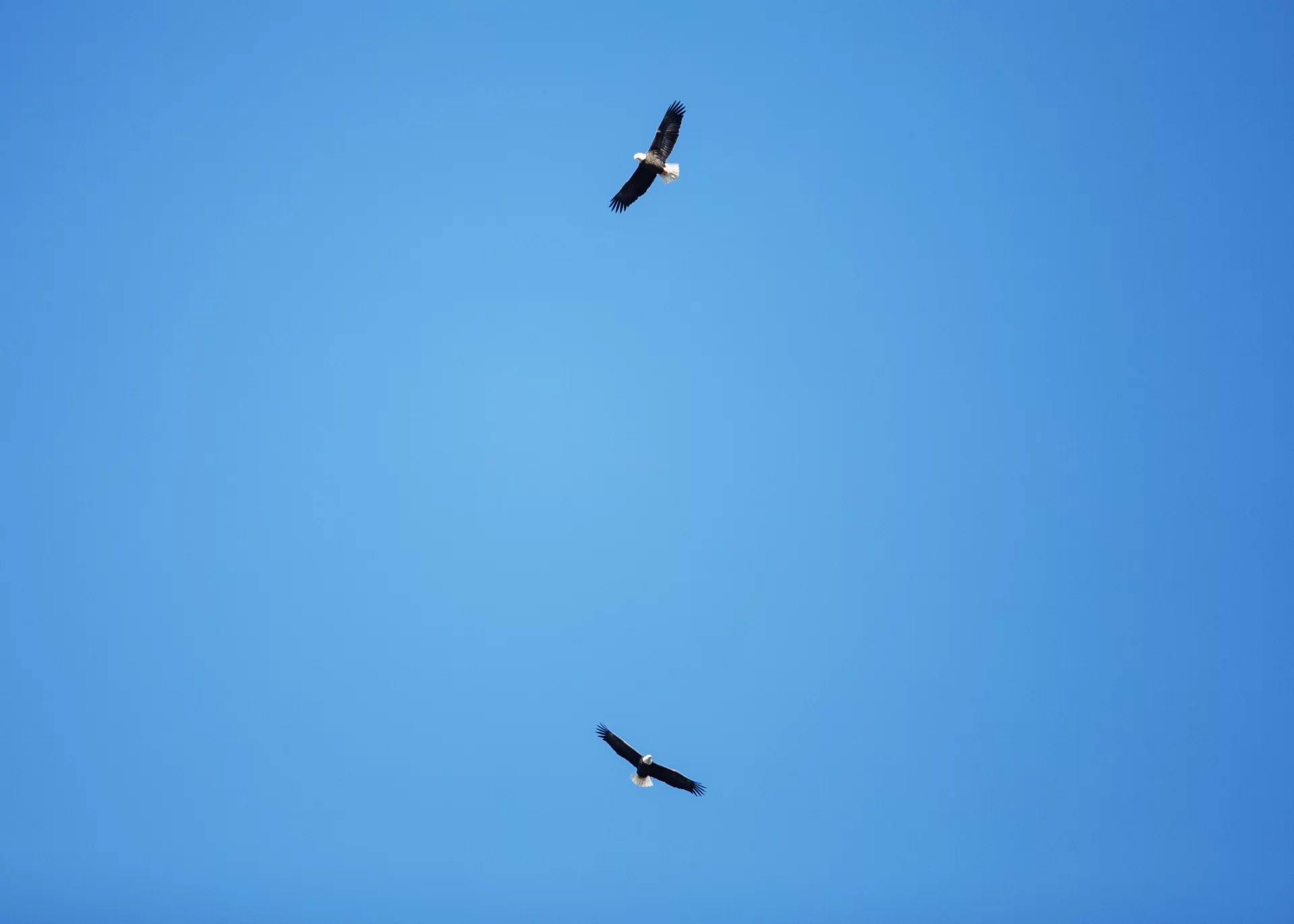
Name: Ouachita map turtle, Graptemys ouachitensis
When this story was published on June 6, we initially identified this as a small snapping turtle. Then James Dowling-Healey ’12 clued us in: It is likely a map turtle, perhaps an Ouachita map turtle, which is not native to Maine but common in the pet trade. “It’s something rare and out of place, likely a released pet,” Dowling-Healey said.
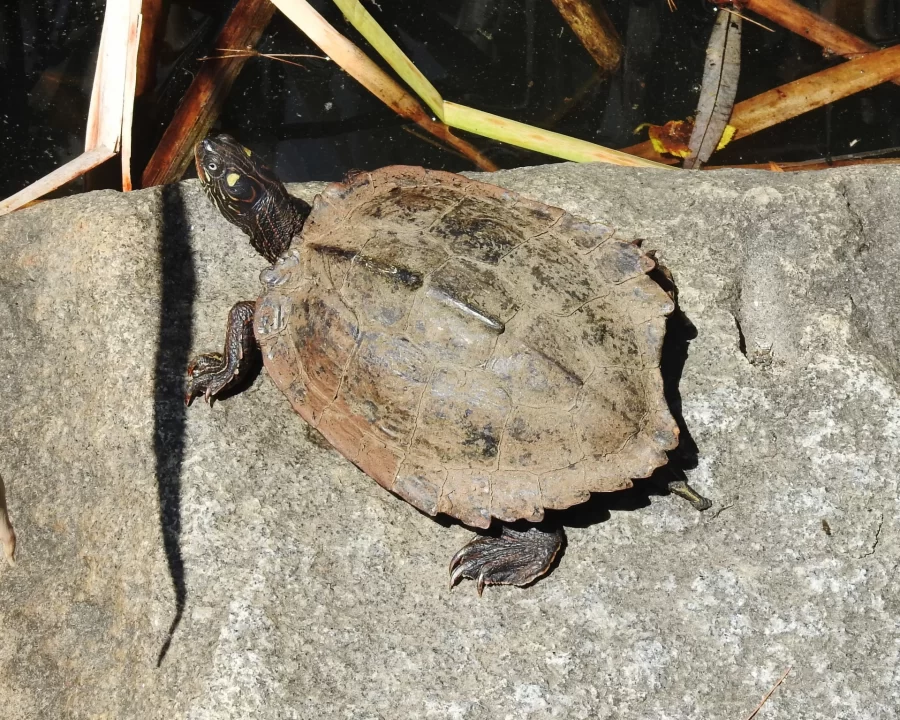
Name: Snapping turtle, Chelydra serpentina
This underwater apparition is a snapping turtle, seen lounging in about 4 inches of water near the inlet on June 3. Last spring, one was seen laying its eggs just off the Burgoyne Walk.
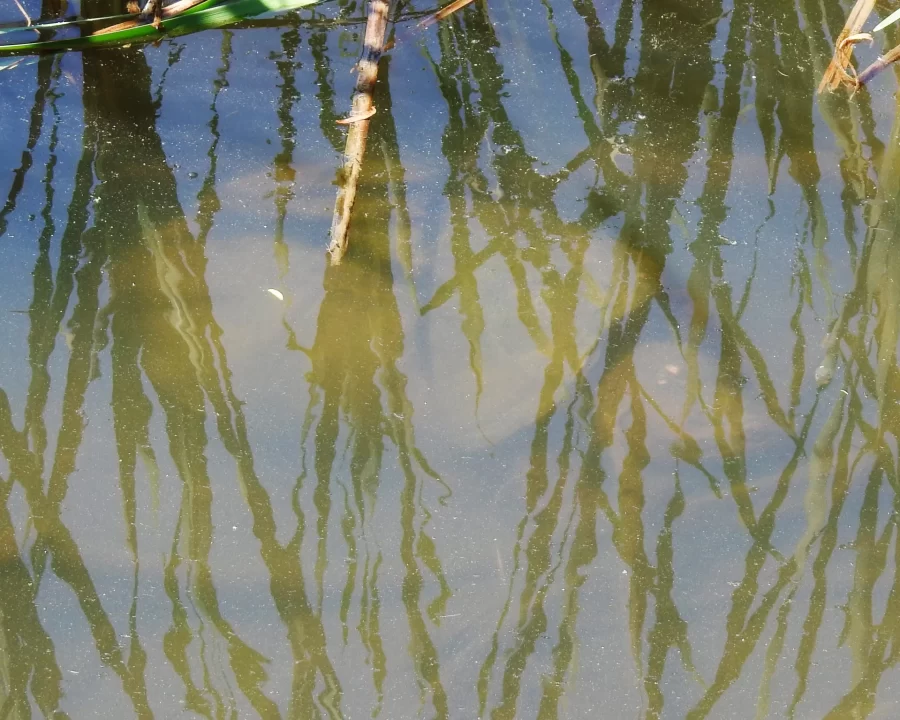
Brace yourself: snapping turtles eat ducklings. And lots of other stuff. Which means they help keep the ecosystem in balance.
Name: Common whitetail dragonfly, Plathemis lydia
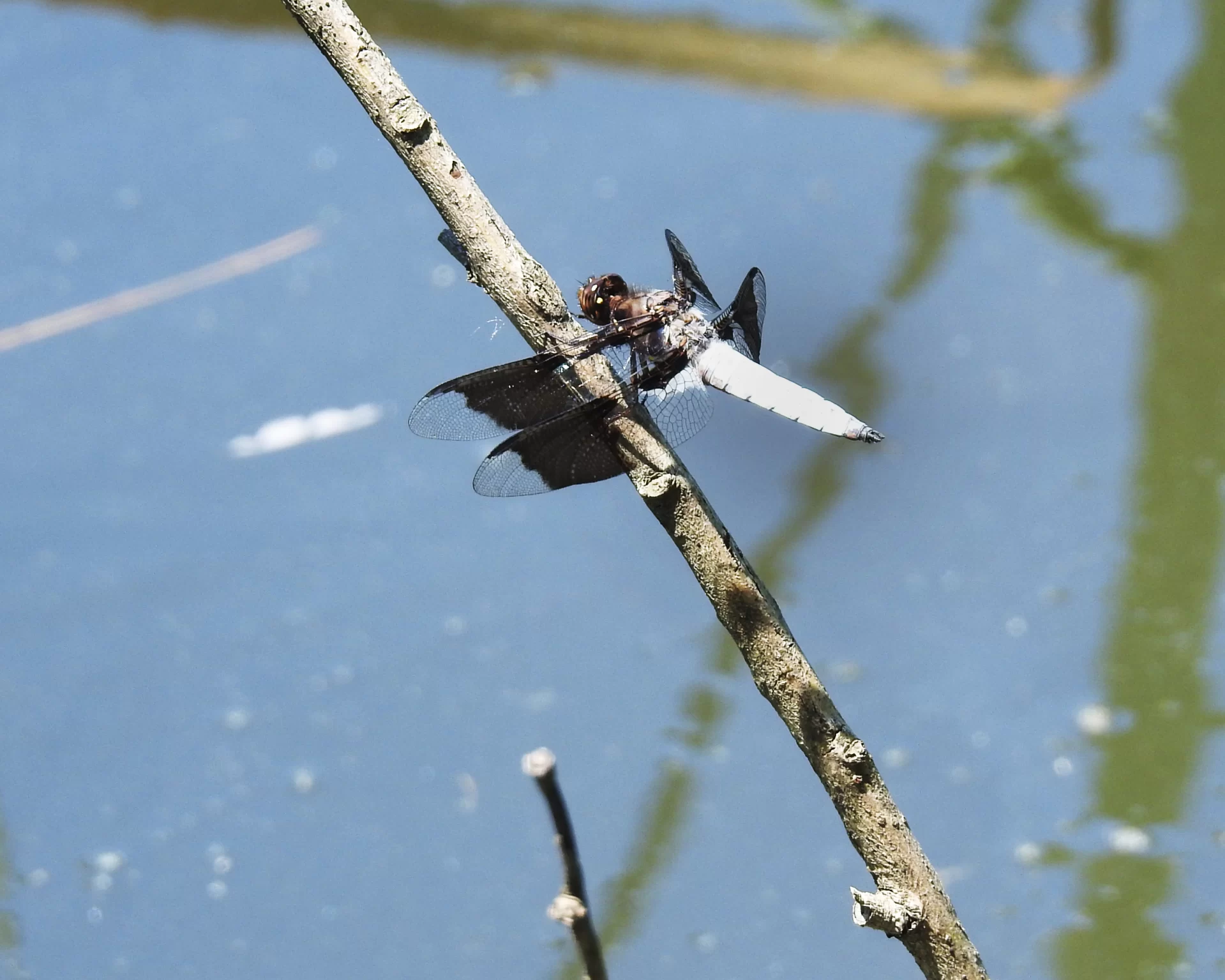
Dragonflies are great flyers. They can move and rotate each of their four wings independently, and fly in six directions—up, down, forward, backward, sideways. And hover.
Name: Eastern gray squirrel, Sciurus carolinensis
The real Bates motto: Amore ac Studio…ac Sciurus.
Gray squirrels have been part of the campus ecosystem and campus culture since the beginning.
The Bates Student reported in 1881 that Albert Millet, Class of 1883, had a “go-as-you-please race” — a form of race where you can walk, jog, or run — with a gray squirrel.
“The first quarter of a mile he gained on the quadruped, but the latter won the race by taking a bee line for the top of a tree,” the Student reported.
Name: Copepod, Skistodiaptomus (genus)
True, you can’t actually see a copepod (the name means “oar-feet”) without a powerful microscope. They are a group of small crustaceans found in most freshwater and saltwater habitats. This example was photographed around 15 years ago by biology major Hannah Schultz ’12.
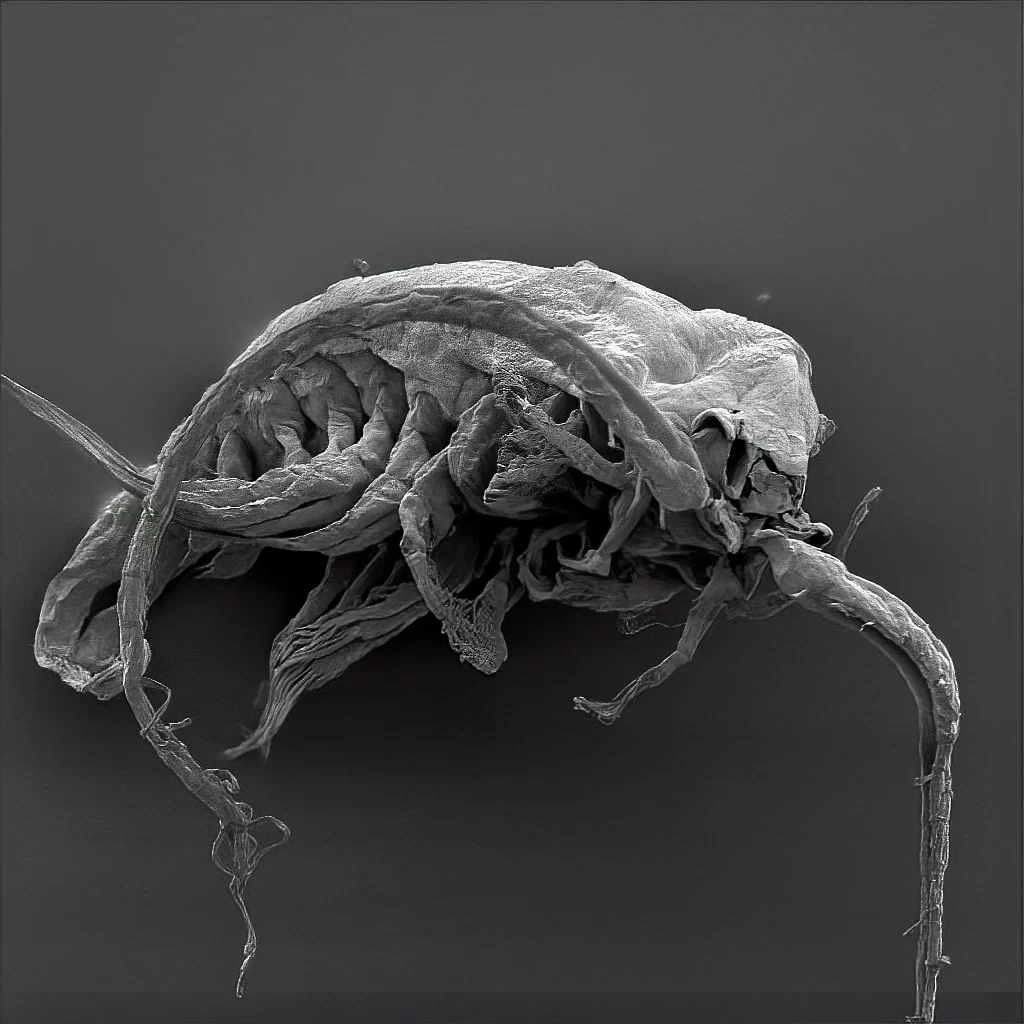
Collecting specimens by tossing a plankton net into the Puddle, she used the college’s scanning electron microscope to create images of the pond’s tiniest creatures, including fish and insect larvae, itty-bitty copepods, and ittier-bittier algae.
Schultz has since earned a medical degree from the Perelman School of Medicine at the University of Pennsylvania, and is now completing a residency at the Wilmer Eye Institute of Johns Hopkins Medicine.
Name: Goldfish, Carassius auratus
There are a couple hundred breeds of goldfish, and all of them are apparently represented in the Puddle. The assumption is that they were introduced by students, and have been referenced since the early 1990s. In the spring, they exhibit this splashing and wriggling spawning behavior. (The fish do, that is.)
James Dowling-Healey ’12, who has degrees in law and biology, suggests that the goldfish “are likely all common goldfish, maybe with a comet (the long, swishy tailed goldfish) or a shubunkin or two. Orange goldfish are picked off by predators like ospreys and herons, so you are more likely to see wild-type goldfish.”
Name: Ducks, Anatidae (family)
One can find 34 species of ducks in Maine, 15 are residents during the breeding season, 18 species winter in the state, and all migrate through Maine. That number includes 11 dabbling ducks, 13 diving ducks, six sea ducks, and four geese.
By the way, fictional fear that a duck is watching you, anatidaephobia, was coined by Garry Larson in a Far Side cartoon.
Name: Double-crested cormorant, Phalacrocoracidae (family)
Cormorants forage for fish underwater, and are capable of holding their breath for two minutes and diving nearly 150 feet deep. “If you watch them for long enough, you’ll see them emerge from the water with wiggling fish,” said Carly Philpott ’27 of Centennial, Colo., who photographed this cormorant speeding over the water on Sept. 23, 2023.
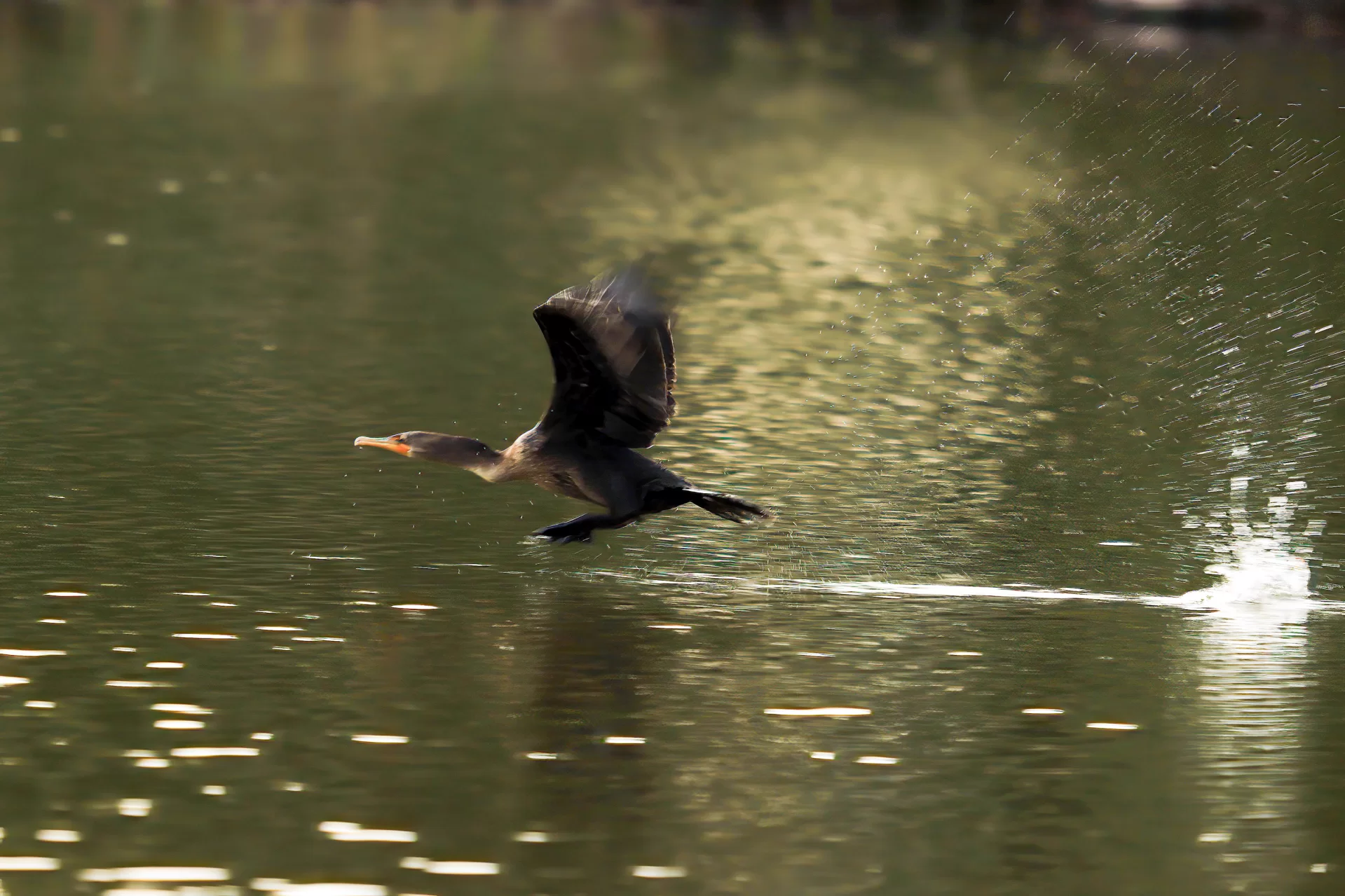
Name: Crayfish, Faxonius (genus)
Maine is home to several species of crayfish, both native and non-native/invasive, such as the rusty crayfish and red swamp crayfish. We’re not sure what species this one is, being eaten by a hooded merganser on Oct. 22, 2019.
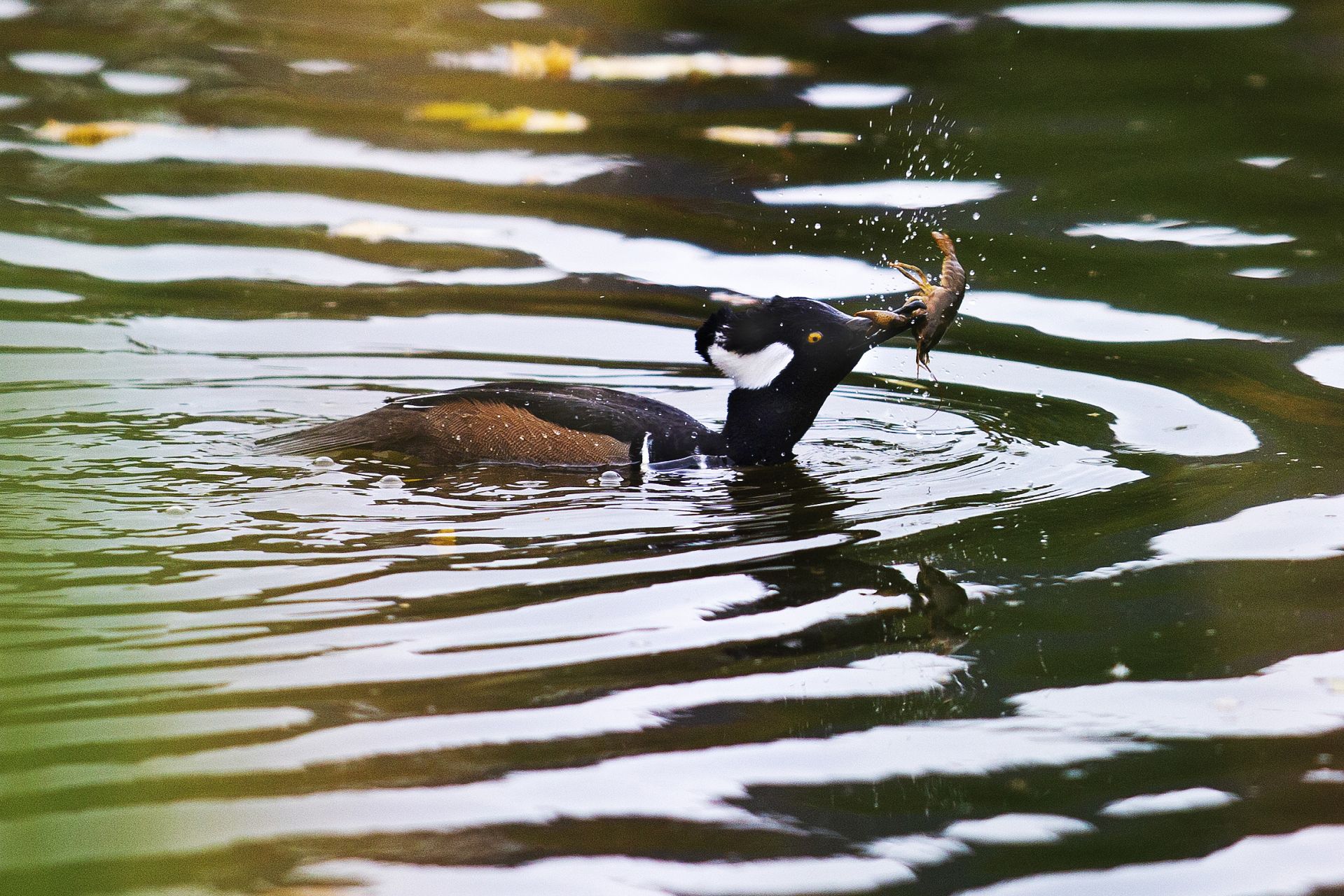
Name: Osprey, Pandion haliaetus
In the warm months, ospreys are frequent visitors to campus. They circle Lake Andrews, searching for their next meal, then dive into the Puddle to scoop a fish.
An osprey is the Greg Louganis of the avian world. Capable of diving head-first into the water from high in the sky, this raptor repositions its body along the way, snagging a fish with a feet-first splash and grab.
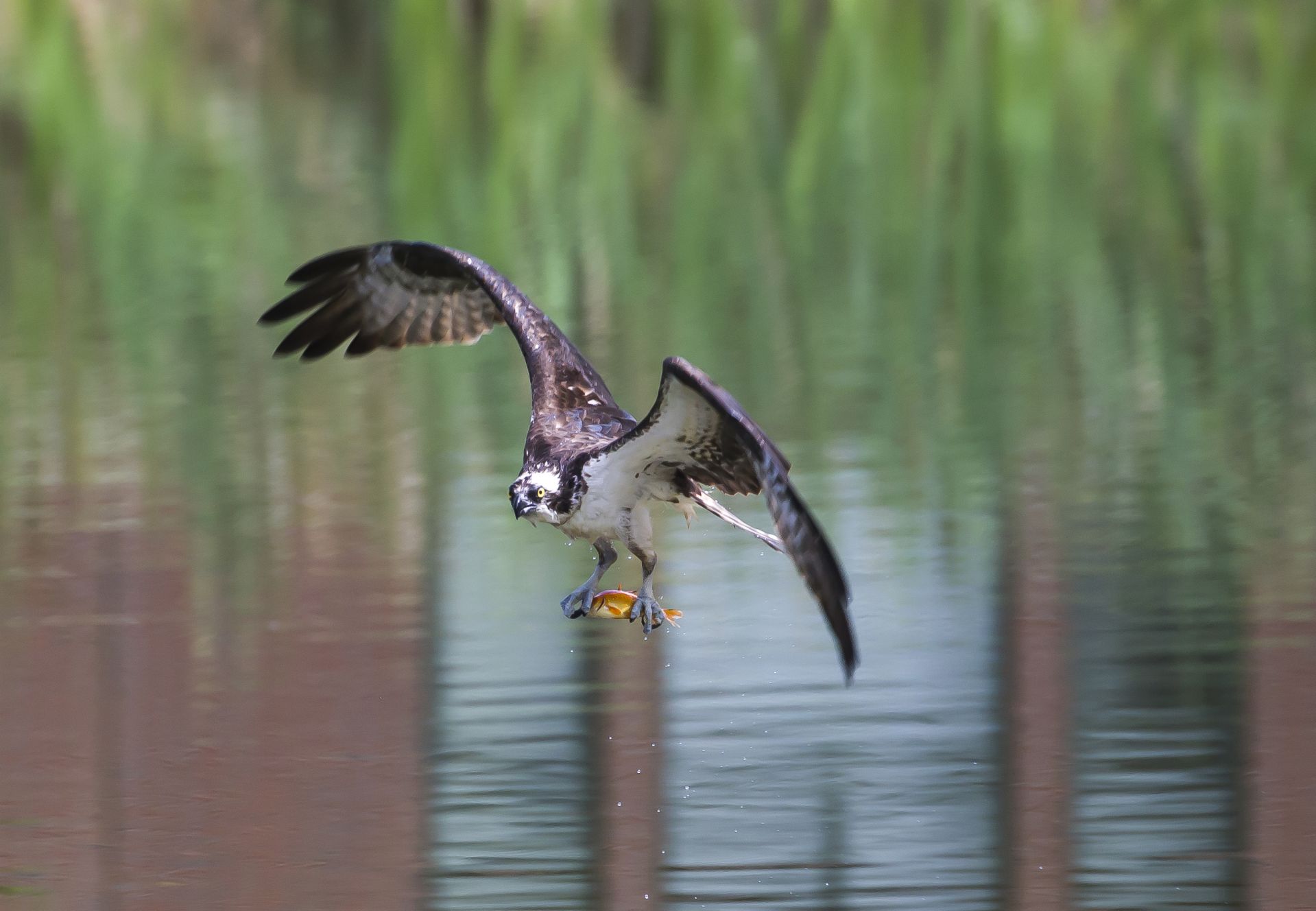
Name: Great blue heron, Ardea horodias
Another predator that helps to maintain a semblance of ecological balance in the Puddle, dining on fish, amphibians, reptiles (including small turtles), and small mammals.
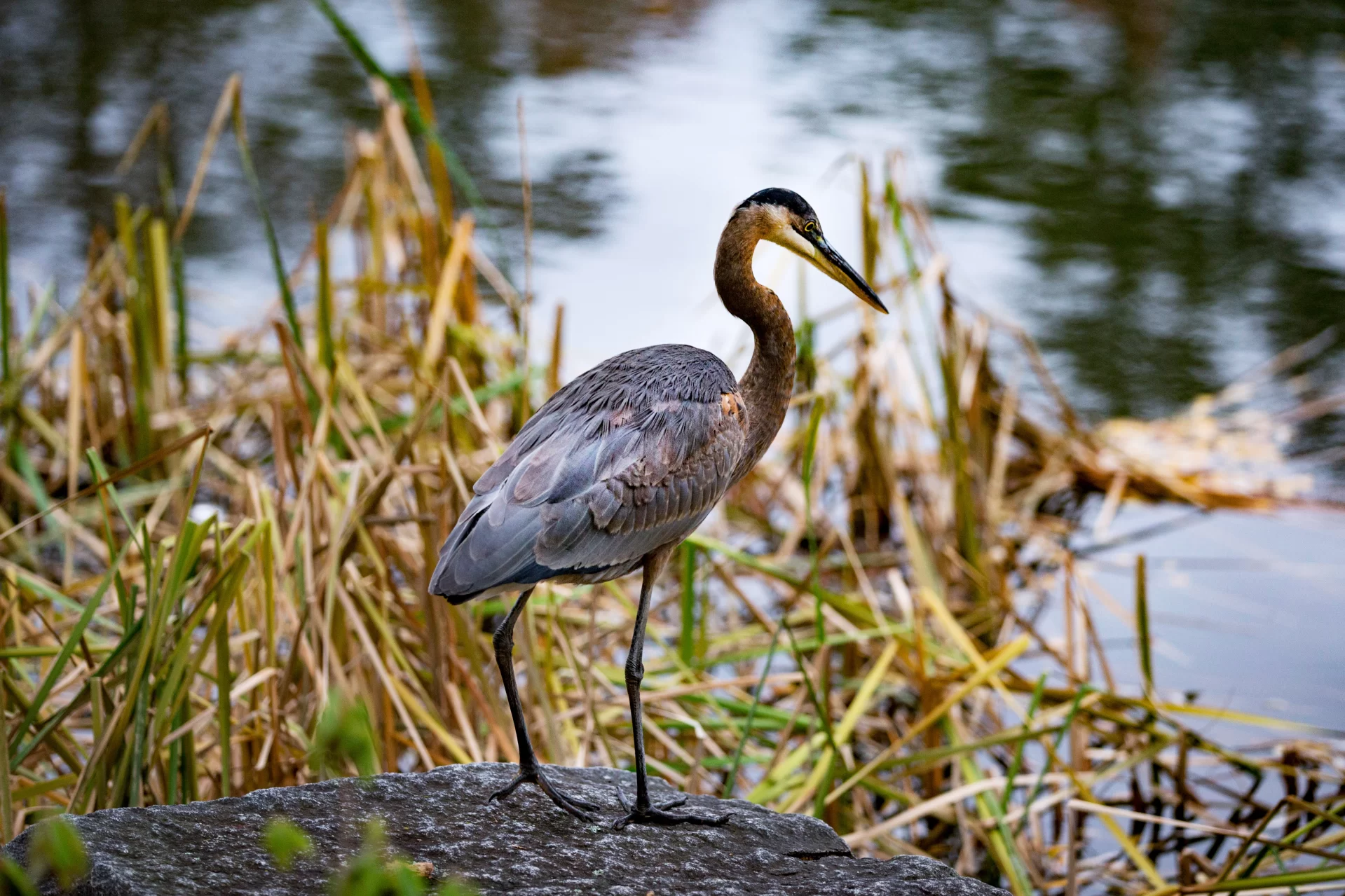
Name: Bates Bobcat, Batesina lynx
And finally we have….the Bates Bobcat, first identified as the college mascot in 1924, which means the Bobcat turns 100 this year.
Jack Williams, Class of 1911, was among the first to suggest the bobcat as a mascot; he had sent a letter to the Bates Alumnus in 1922 suggesting the bobcat: “It is small — but Oh! how it can fight.” In December 1924, the student body gathered in the Chapel and, with a near-unanimous vote, decided on the feisty feline.
The Bates Bobcat, curiously gregarious for a species typically considered elusive, is guaranteed to be out and about during Reunion weekend!
